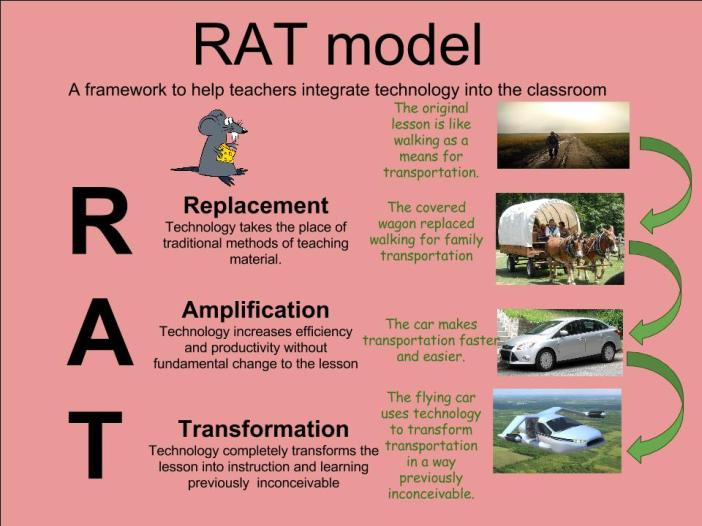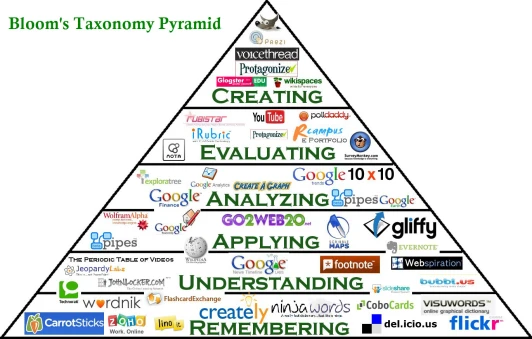Edmodo and Schoology are both Learning Management Systems that have become very popular as technology has officially begun seeping into classrooms in both schools and businesses. I was recently asked to compare two of them, and so I chose these two, but making the choice on which two to compare was no easy task. At one time, not all that long ago, there were only a handful of LMSs. Now there are well over 300 of them, and I had to choose only two?! Well, I guess I can do that…but which ones? Well, I went with two of the most popular web-based LMSs that were also free, as I figured that would be most useful for my first post about LMSs. I went with Edmodo and Schoology.

Edmodo
Edmodo is often lauded as the most popular free LMS on the web. It is a terrific tool for any teacher wanting to integrate technology into their classroom, or for any trainer wanting to move their employee training to a digital format. One of the best parts about it (other than the fact that it is free), is how easy it is to set up. If you want to create a course in Edmodo, just go to the website here. Register in about 2 minutes, and you are ready to get started. It is just that easy! Awesome, right? I thought so, too.

Once you are registered, you can start setting up your course. You can make up your profile, set up your calendar with all the due-dates for assignments, events, and anything else you need to put in there. You can input all your students and get them registered. There is a Gradebook you can set up as well. Get everything ready to go, and register your students, and then GO!

The interface is much like that of Facebook. If you have a Facebook account, or have ever had a Facebook account, you will immediately feel comfortable with the layout of Edmodo. Once you have started your course, you can begin making posts that your students can see. They are also able to post to the class, and discussions can occur at any time. There are other methods of collaboration, however. There is email integration, internal messaging, and parental access. With communication being the most important tool for educators, is is great to have multiple methods to do so. Another important factor is that it is accessible through most mobile devices as well, as it is set up for Android, iOS, and mobile web. If you are a BYOD district (see my post about BYOD vs. 1:1 here), or if you use tablets, such as iPads, this feature is huge.

When you are ready to give out assignments, you can upload documents, videos, projects, links to other web tools, or anything else you can come up with. There is a standards alignment tool where you can create assignments that are aligned to Common Core or State Standards. These assignments are then automatically generated and populated in your Gradebook. This is a pretty cool tool. If you have assignments that are not created in Edmodo, you can still use Snapshot to help you determine what standards align to that assignment, add the standards to the assignment, and then go to your Gradebook and add the assignment. You will have to input the grades by hand for the assignments not generated in Edmodo, however. There is also a test engine that allows you to make up your own tests and quizzes. These are automatically graded, put into your Gradebook, and gives immediate feedback to your students…all while you sit back and binge watch your favorite TV show you missed before you had an LMS to do much of your grading for you.

There are badges you can award to your students, there are communities that you can join to communicate and collaborate with teachers and trainers from all over and within your district or company. If you go to the “Spotlight” icon, you can find a ton of links and resources shared by others within the Edmodo community that you can use in your own course. There is a huge wealth of information and resources that would make any educator jump for joy! This was my very favorite feature in Edmodo.

You can store your folders and assignments in your library, which is great, but your library is not ever available to your students. When you want the assignments to be available to students, they have to be posted to the main course page. This is generally pretty useful and easily accessible, but it can also become problematic if you have students that are working from home, or are self-paced, or even if they are just absent for a few days due to a family vacation or an illness. The reason for the issue is that, like in Facebook, the longer the assignment is posted, the further down the page it moves, being pushed down by more recent posts. Students will have to scroll down to find any assignments missed, or you will have to send them their missing assignments privately. This situation can potentially become a real pain, but some people may not find it to be so bad. Actually, there are millions of educators that don’t seem to feel it is too much of a problem, so it may just be a personal preference of mine.
If you are a data kind of person, you will like the analytics that are available. There is skills tracking available, which is really nice, especially if you have a class with a high amount of skills diversity. You can check out the data for all of your tests and quizzes and grades for each student, as well as a progress tracker for your class. There are lots of graphs that we teachers love to use for data analysis.

Overall, Edmodo is a great platform to get started. It is free, has a ton of resources, and it contains all the major functions for a successful online or blended classroom. And did I mention it is free?
Schoology
Schoology is also free. Yes! But is also as a premium upgrade that you can pay for. Apparently the term for that is freemium. (Really??). Anyway, the free version is really great and has plenty for most classrooms in today’s schools and businesses. Like Edmodo, it is super easy to sign up and get started. Just go to the website here. You can be registered in no time and get started building your own course. Schoology, like Edmodo, has a Facebook-like social media format that is both familiar and comfortable, but it is not as “Facebook-y” as Edmodo. You can post to the main page in a Facebook-like way, but it has more functionality than the Edmodo interface. You can have all the materials for your course in one place so students can find anything they missed or need at any time without having to scroll down to find them. You can build folders for each unit, upload anything you want, such as slide presentations, videos, other media, documents, links, or anything else you can think of to these folders. You can determine the dates you want them accessible to your students as well, so they are not all there for them to view unless you want them to be. For example, you can set the accessibility for each folder to the last day of school, and just before you want them to be visible to your students, you can go in and change the date to the day you want them to appear. That way you don’t have to worry about students working ahead before they are ready. Personally, I find this set-up to be the biggest difference between the two LMSs, and I much prefer the Schoology way, but that is just my personal preference. It certainly lends this platform to a more self-paced course if you would like to make it that way.

Schoology is also mobile-ready for Android, iOS, and mobile web devices. Again, this is a big deal, especially in BYOD schools or schools using tablets like iPads. If you are a business using it for training purposes, this could be a bonus in that your employees can use their phones or tablets to access the course from anywhere if they so choose, and if you decide to allow this feature. Accessibility is a great thing.
Communication is another feature that is important in an LMS. Like Edmodo, Schoology has parental access, internal messaging, and discussion boards, but it also has a blog feature, which I find to be pretty cool
. If you are trying to decide if you want to integrate a blog or an LMS into your classroom, this is a way you can do both without having to get used to two different programs. You can do all the blogging yourself, or you can have the students blog as well. Anther great communication tool, like Edmodo, Schoology has groups that you can join where you can communicate and share with other teachers or trainers and share information with them. Under “Resources,” you can access all kinds of lessons and links and other things you can put right into your course. You can share your favorite lessons with other educators or trainers as well, if you so choose. It is a wonderful way to change things up or to upgrade your own course! And it is great fun to just look around and see what others have come up with and even get an idea sparked in your own mind.

Every teacher and most trainers need some way of tracking student progress, so the Gradebook feature and the attendance feature is awesome. Like Edmodo, you can build your own tests and quizzes with the test engine within Schoology and the grades will automatically populate to your Gradebook, allowing for all that TV binge-watching. You can create assignments in Schoology that also populates to your Gradebook. There are ready-made rubrics for those and other projects you may have that you can use or you can make up your own. You can use several resources to align your assignments with Common Core and state standards, too.

If you are a data nerd like most of us educators, you will love all the data options in Schoology. You can look at how your students performed on certain assignments, tests, and quizzes and determine if you need to revisit a topic or if the class is ready to move on, and you can do so in the blink of an eye. All you need to do is click on “Analytics” on the left-hand side of the page and you can choose what information you wish to look at.

Finally, Schoology is SCORM compliant, whereas Edmodo is not. What does this actually mean? Well, I will let SCORM.com (n.d.) tell you in their own words:
SCORM is a set of technical standards for e-learning software products. SCORM tells programmers how to write their code so that it can “play well” with other e-learning software. It is the de facto industry standard for e-learning interoperability. Specifically, SCORM governs how online learning content and Learning Management Systems (LMSs) communicate with each other. SCORM does not speak to instructional design or any other pedagogical concern, it is purely a technical standard.

Final Analysis
Both of these LMSs are amazing tools. They both have all the major components for a successful online or blended classroom, a plethora of resources, and communities or groups that can help generate and share ideas. There are methods for collaboration and communication, the integration of apps and the ability to build and create an amazing course for your students to learn and enjoy the process. On top of all that, there are graphs and charts you can use for data analysis, and you can do it all in less time than you ever did without an LMS, so you are definitely in good shape with either tool. It is a tough call, but I do lean slightly in favor of Schoology, mainly for two reasons:
- I prefer how it is set-up so that your course can be self-paced. You can place your assignments into folders and students never have to scroll down to find them.
- I like that is it is SCORM compliant. It just makes it more versatile for other e-Learning products and tools, making it a slightly stronger LMS in my opinion.
Other than those two issues, I think they are both basically equal and quite similar. They have everything you need, and most of all, they are free!















![St. Joseph Catholic High School (n.d.). [Image of graduation cap and diploma tied with a red ribbon]. Retrieved from: https://sjchsrenfrew.files.wordpress.com/2010/08/graduation.jpg graduation_cap_with_diploma_red_ribbon_instructional_design](https://sjchsrenfrew.files.wordpress.com/2010/08/graduation.jpg?w=162&h=162)
![Pascall, W. (2008). [Image of an arrow and a visual explanation of the ADDIE Process]. Retrieved from: http://www.activedomain.com/blog/?page_id=20 7592807_ADDIEMODEL_WPascall_Version8.jpg (500×375)_instructional_design](https://i0.wp.com/www.activedomain.com/blog/wp-content/uploads/2011/04/7592807_ADDIEMODEL_WPascall_Version8.jpg)